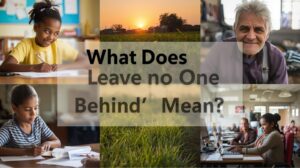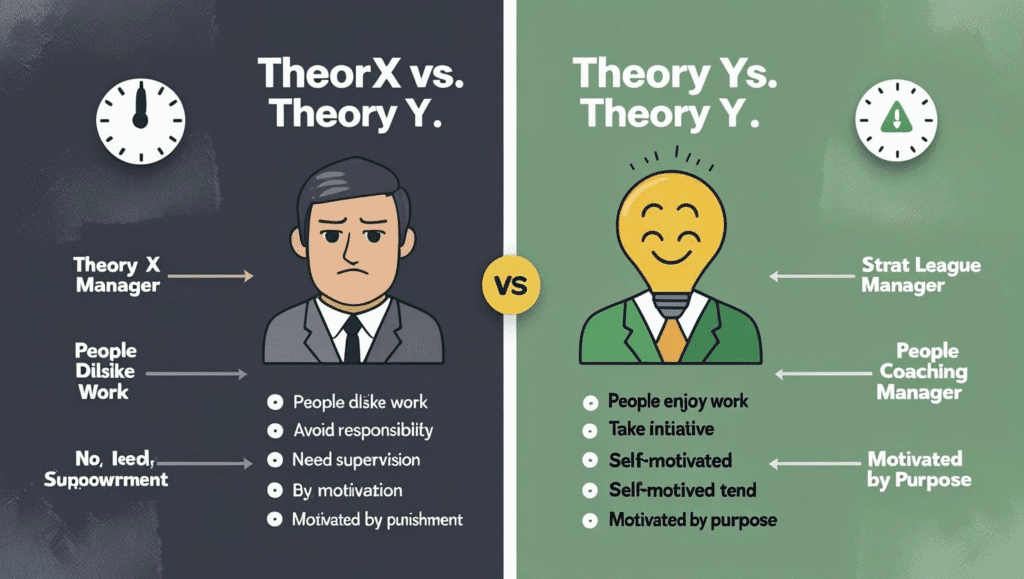What Does “Leave No One Behind” Mean in the Context of the SDGs?
At its core, “Leave No One Behind” (LNOB) is the central, transformative promise of the 2030 Agenda for Sustainable Development. It represents a solemn pledge by all United Nations Member States to eradicate poverty in all its forms, end discrimination and exclusion, and reduce the inequalities and vulnerabilities that undermine human potential. It’s a paradigm shift from previous development models, focusing explicitly on reaching the most marginalized and disadvantaged members of society first.
Deconstructing the Promise: More Than a Slogan
The phrase “Leave No One Behind” is far more than an inspiring tagline; it is a guiding principle embedded within the fabric of all 17 Sustainable Development Goals (SDGs). It fundamentally alters how we approach development, shifting the focus from national averages to the well-being of individuals and specific groups. If a country’s overall GDP is rising but the poorest 20% are getting poorer, the LNOB principle dictates that this is not true sustainable development.
This commitment is a recognition of a historical failure. The Millennium Development Goals (MDGs), the predecessors to the SDGs, achieved significant progress in many areas. However, critics noted that these gains often bypassed the most vulnerable populations. Progress was frequently measured in aggregate terms, which masked deep-seated inequalities. A country could meet a poverty reduction target while extreme poverty remained entrenched in specific geographic regions or among particular ethnic minorities. LNOB is the world’s corrective response to this oversight, demanding a more granular, equitable, and human-rights-based approach to progress.
Who Are “Those Left Behind”?
The 2030 Agenda doesn’t leave the identification of “those left behind” to chance. It explicitly highlights various groups of people who are most likely to be marginalized. While the specific context varies from country to country, these groups universally face systemic barriers to social, economic, and political inclusion. Reaching them is the litmus test for the success of the SDGs.
People in Extreme Poverty
This is the most fundamental group. LNOB demands that development efforts prioritize lifting people above the international poverty line, ensuring access to basic services like food, clean water, and sanitation.
Women and Girls
Despite progress, women and girls worldwide face discrimination, violence, and unequal access to education, healthcare, economic opportunities, and political participation. SDG 5 (Gender Equality) is a cornerstone of the LNOB promise.
Children and Youth
Young people, especially those in vulnerable situations, must have access to quality education (SDG 4), healthcare, and decent work opportunities (SDG 8) to break intergenerational cycles of poverty.
Persons with Disabilities
An estimated 15% of the world’s population lives with a disability. They often face immense physical, social, and economic barriers. LNOB means creating accessible infrastructure, inclusive education, and non-discriminatory employment.
Indigenous Peoples
These communities are often custodians of biodiversity but face threats to their lands, cultures, and livelihoods. Their rights, traditional knowledge, and self-determination are critical components of the LNOB agenda.
Refugees & Migrants
People forced to flee their homes due to conflict, persecution, or disaster are among the world’s most vulnerable. LNOB calls for their protection, dignity, and inclusion in host communities.
Older Persons
As global populations age, ensuring the dignity, health, and economic security of older persons is vital. They are often at risk of poverty, neglect, and social isolation.
Ethnic & Religious Minorities
Groups facing discrimination based on their ethnicity, religion, or language are often denied equal rights and opportunities. LNOB is a direct challenge to all forms of discrimination and xenophobia.
This list is not exhaustive. LNOB also applies to people living in remote rural areas, informal settlements, climate-vulnerable regions, and countries in conflict. The core idea is to identify the root causes of their exclusion and tailor policies to address them directly.
The Five Pillars of Action: A Framework for Inclusion
The United Nations Sustainable Development Group (UNSDG) has outlined a framework that operationalizes the LNOB promise through five key pillars. This framework helps policymakers and practitioners translate the principle into concrete action.
- Pillar 1: Equality and Non-Discrimination. This goes beyond simply having laws in place. It requires actively tackling discriminatory social norms, stereotypes, and institutional biases. It means ensuring that justice systems are fair and accessible to all, regardless of their background.
- Pillar 2: Social Protection and Essential Services. This pillar focuses on creating a social safety net. It includes universal health coverage, quality education for all, access to clean water and sanitation, and social protection floors (e.g., pensions, disability benefits, child support) that prevent people from falling into destitution during crises.
- Pillar 3: Economic Transformation for Inclusive and Sustainable Growth. Development cannot leave people behind if the economic model only benefits a few. This requires creating decent jobs, promoting entrepreneurship among marginalized groups, ensuring fair wages, and transitioning to a green economy that provides new opportunities for all.
- Pillar 4: Governance and Resilience. Inclusive governance is key. This means ensuring that marginalized groups have a voice in the decisions that affect their lives. It involves building transparent, accountable institutions and strengthening community resilience to shocks like climate change, economic crises, and pandemics.
- Pillar 5: Measuring and Monitoring Inclusion. What gets measured gets done. The LNOB agenda’s most significant technical challenge is data. It requires a data revolution to move beyond national averages. We need high-quality, timely, and reliable data that is disaggregated by income, gender, age, race, ethnicity, migratory status, disability, and geographic location. Only with this granular data can we truly see who is being left behind and why.
Challenges in Realizing the LNOB Promise
While the vision of LNOB is powerful, its implementation is fraught with challenges. Eradicating deep-rooted inequalities is a complex, long-term endeavor that requires immense political will, financial investment, and societal change.
- Financing Gaps: Reaching the furthest behind is often more expensive. Targeted social programs, accessible infrastructure, and specialized services require significant and sustained funding, which is a major challenge for many developing countries.
- Political Will: In some contexts, policies of exclusion are deliberate. Overcoming entrenched political and economic interests that benefit from the status quo requires courageous leadership and strong advocacy from civil society.
- The Data Deficit: As mentioned, a lack of disaggregated data is a major hurdle. Many national statistical offices lack the capacity to collect, analyze, and disseminate data for specific population groups, making it difficult to design and monitor targeted interventions.
- Intersecting Crises: The world is facing multiple, overlapping crises—the climate emergency, geopolitical conflicts, and the lingering effects of the COVID-19 pandemic. These crises disproportionately impact the most vulnerable, threatening to reverse progress and push more people behind.
Your Role in an Inclusive Future
The 2030 Agenda is not just for governments. It’s a shared blueprint for humanity. Individuals, communities, and businesses all have a role to play in ensuring no one is left behind.
Learn How You Can HelpConclusion: A Moral Imperative for a Sustainable Future
Ultimately, “Leave No One Behind” is the moral and ethical foundation of the 2030 Agenda. It transforms the SDGs from a simple checklist of development targets into a comprehensive vision for a just, equitable, and dignified world. It asserts that the true measure of our progress is not how well the most privileged are doing, but how we are lifting up the most vulnerable among us. Achieving this promise is the greatest challenge of our time, but it is also our greatest opportunity—to build a truly sustainable and prosperous future for all people and the planet.
Frequently Asked Questions
The main difference is the explicit focus on inequality. The MDGs (2000-2015) were successful in many ways but were often criticized for focusing on national averages, which allowed progress to be claimed even if the poorest and most marginalized communities were bypassed. LNOB, the core principle of the SDGs (2015-2030), corrects this by demanding that progress be judged by how well the most vulnerable are faring. It requires disaggregated data and targeted interventions to reach those who are furthest behind first.
Disaggregated data is data that has been broken down into smaller sub-categories. Instead of a single national statistic for, say, school enrollment, disaggregated data would show enrollment rates for boys vs. girls, urban vs. rural areas, children with vs. without disabilities, and different ethnic or income groups. It is crucial for LNOB because it allows us to see *who* is being left behind and *why*. Without it, inequalities remain invisible, and policymakers cannot design effective, targeted programs to address them.
Individuals have significant power. You can contribute by:
1. Educating Yourself & Others: Understand the SDGs and the challenges in your own community.
2. Advocating: Hold your local and national leaders accountable for their commitments to the SDGs.
3. Reducing Your Footprint: Make sustainable consumption choices that protect the planet, which disproportionately affects the poor.
4. Volunteering & Donating: Support organizations that work directly with marginalized communities.
5. Challenging Discrimination: Speak out against prejudice and advocate for inclusivity in your workplace, school, and community.
The 2030 Agenda for Sustainable Development, including the LNOB principle, is not a legally binding treaty. However, it represents a powerful political and moral commitment unanimously agreed upon by all 193 UN Member States. Countries are expected to establish their own national frameworks for implementation and to report on their progress voluntarily. The power of the agenda comes from this global consensus, peer pressure, and the advocacy of civil society holding governments accountable to their promises.


